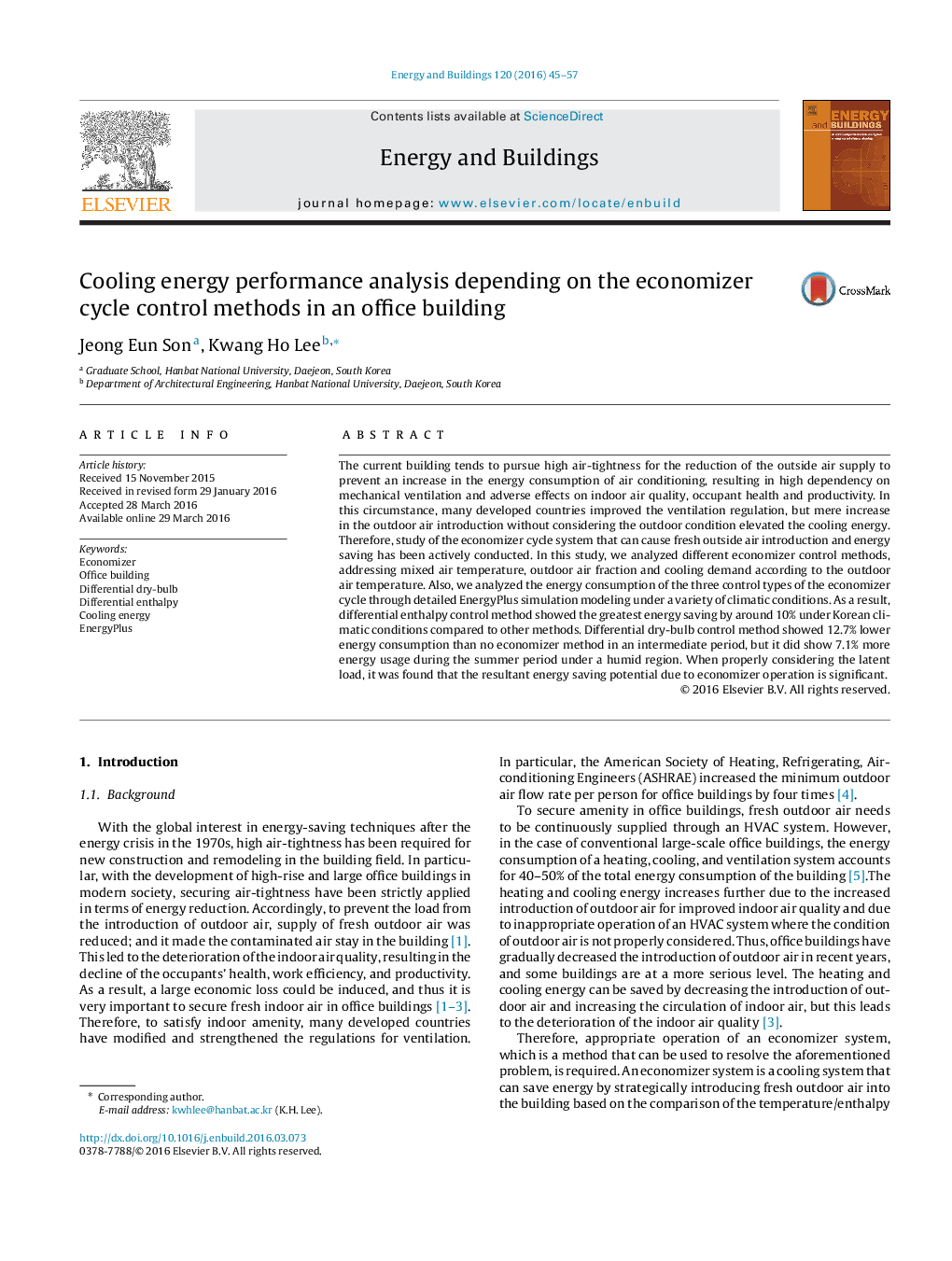| Article ID | Journal | Published Year | Pages | File Type |
|---|---|---|---|---|
| 6730128 | Energy and Buildings | 2016 | 13 Pages |
Abstract
The current building tends to pursue high air-tightness for the reduction of the outside air supply to prevent an increase in the energy consumption of air conditioning, resulting in high dependency on mechanical ventilation and adverse effects on indoor air quality, occupant health and productivity. In this circumstance, many developed countries improved the ventilation regulation, but mere increase in the outdoor air introduction without considering the outdoor condition elevated the cooling energy. Therefore, study of the economizer cycle system that can cause fresh outside air introduction and energy saving has been actively conducted. In this study, we analyzed different economizer control methods, addressing mixed air temperature, outdoor air fraction and cooling demand according to the outdoor air temperature. Also, we analyzed the energy consumption of the three control types of the economizer cycle through detailed EnergyPlus simulation modeling under a variety of climatic conditions. As a result, differential enthalpy control method showed the greatest energy saving by around 10% under Korean climatic conditions compared to other methods. Differential dry-bulb control method showed 12.7% lower energy consumption than no economizer method in an intermediate period, but it did show 7.1% more energy usage during the summer period under a humid region. When properly considering the latent load, it was found that the resultant energy saving potential due to economizer operation is significant.
Related Topics
Physical Sciences and Engineering
Energy
Renewable Energy, Sustainability and the Environment
Authors
Jeong Eun Son, Kwang Ho Lee,
